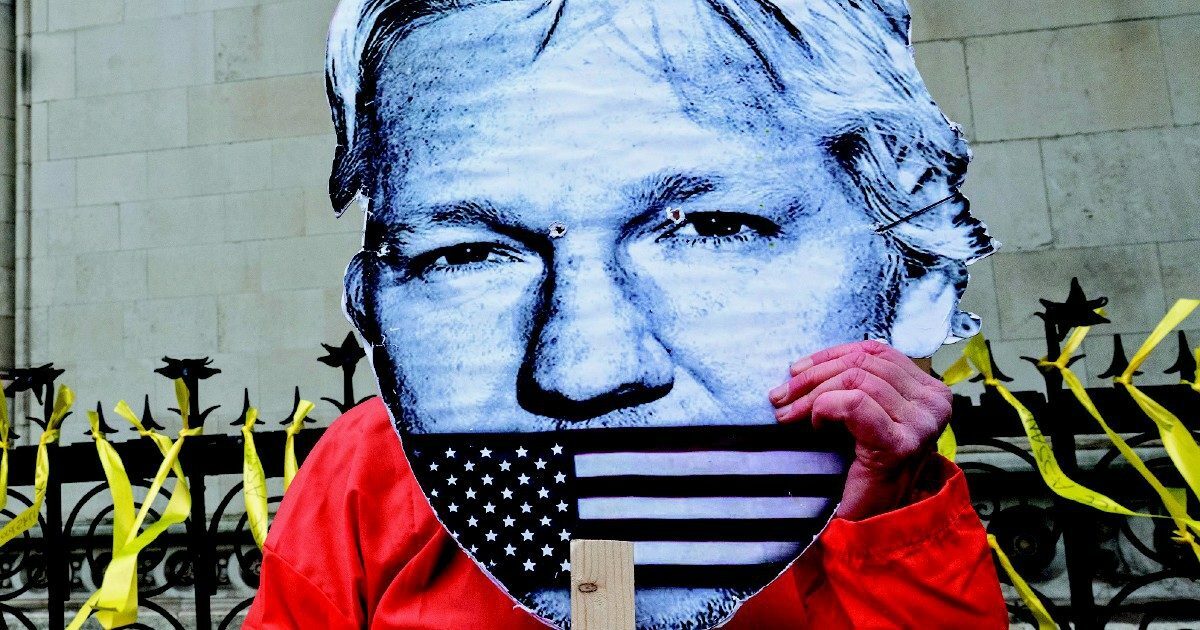U.S. authorities considered detaining Julian Assange at the United States border in July 2010, before WikiLeaks had revealed the secret documents on the war in Afghanistan, and had enlisted at least one informer willing to wear a microphone to spy on conversations about WikiLeaks during a well-known hackers conference in New York, to which Assange had been invited. Just twelve weeks after WikiLeaks published the Collateral Murder video, the U.S. investigation into WikiLeaks involved “several military units”, including Army intelligence agents, agents with the Department of the Army Criminal Investigation Division (US Army CID), the Computer Crimes Investigative Unit (CCIU) and Army CID attorneys. But despite all these investigative resources, four months after the arrest of WikiLeaks source Chelsea Manning, U.S. authorities had yet to establish with certainty that the person who had talked to Manning under the nickname ‘Nathaniel Frank” was in fact Julian Assange.
Revealing this information for the first time are exclusive documents we have been able to obtain after a lengthy legal battle under the Freedom of Information Act (FOIA) in the United States against the Department of State. They reveal what happened behind the scenes in those months of 2010, when WikiLeaks published the classified U.S. documents for which Assange risks 175 years in a maximum security prison.
Detaining Assange at the US border
After publishing the Collateral Murder video, WikiLeaks became an international phenomenon. On July 7, 2010 (read), U.S. authorities wrote: “Army CID developed a plan to conduct surveillance in New York City in mid-July at a large gathering of well-known computer hackers. Army CID believes that the WikiLeaks case will be a topic of discussion and have enlisted a cooperating individual (CI) to assist in their investigation […] Army CID anticipates that the founder of WikiLeaks, Julian Assange may attend the conference”. The large gathering in New York was (and still is) one of the most important hackers conferences in the United States. That year, Hackers On Planet Earth (HOPE) was to be held July 16 – 18, a week before WikiLeaks published the Afghan War Logs. Chelsea Manning, the source who had leaked the classified U.S. documents to WikiLeaks, had already been arrested on May 27, 2010, after confessing during a chat with Adrian Lamo – despite never having met him before – that it was she who had leaked those documents to Wikileaks. The files included classified U.S. Army information and around 260,000 U.S. diplomatic cables. What better opportunity for the American authorities than to nab Assange at the HOPE Conference? “Army CID may attempt to detain Assange at the Canadian/New York border if they can get information about his arrival”, FOIA documents read. However, Assange did not travel to the United States. American investigative journalist and computer security expert, Jacob Appelbaum, gave a keynote address at HOPE on his behalf.
Hidden microphones
Despite the HOPE conference being a public event, FOIA documents reveal that the Army CID had “a cooperating individual (CI) who has agreed to wear a microphone while attending the HOPE conference”. It is reasonable to conclude that the microphone was presumably intended to spy on private conversations regarding WikiLeaks, considering that the public talks and conversations held were accessible to everyone.
Appelbaum gave his keynote address and then flew to Europe, but upon his return to the United States was detained and interrogated at the airport.
How the US has obstructed our FOIA battle
Although the U.S. authorities could rely on microphones, informants and considerable resources, almost four months after Manning had been arrested they were apparently not yet certain that “Nathaniel Frank”, with whom Manning had chatted before passing on the classified U.S. documents, was actually Julian Assange. “CID believes that ‘Nathaniel Frank’ in the chat logs is in reality Julian ASSANGE. There is a minority opinion that ‘Frank’ could be a WikiLeaks associate”, a FOIA document dated September 2010 says. The name of the WikiLeaks associate is redacted in the FOIA document, as are many other items of information. We will soon be initiating a legal battle to get the redactions removed. The U.S. authorities have obstructed the FOIA process for years. In our FOIA litigation we have been represented completely pro bono by two American lawyers, Alia Smith and Lauren Russell with the Ballard Spahr law firm. “We’ve been frustrated by the incredible amount of time it’s taken for the Department of State to complete processing on Maurizi’s FOIA request”, Smith and Lauren tell our newspaper, “Even given the complications of reviewing during COVID, the years of delay have been unacceptable. We are glad to have helped our client get the bulk of the requested records, albeit six years since she submitted her FOIA request, and hope this matter can finally come to a close soon”. Contacted by Il Fatto Quotidiano and asked to comment on these revelations, WikiLeaks editor, Kristinn Hrafnsson, replied: “It is worrying that Julian was in the US’s crosshairs this early. It shows the early determination by the US administration to stifle journalism when it suits them”.

